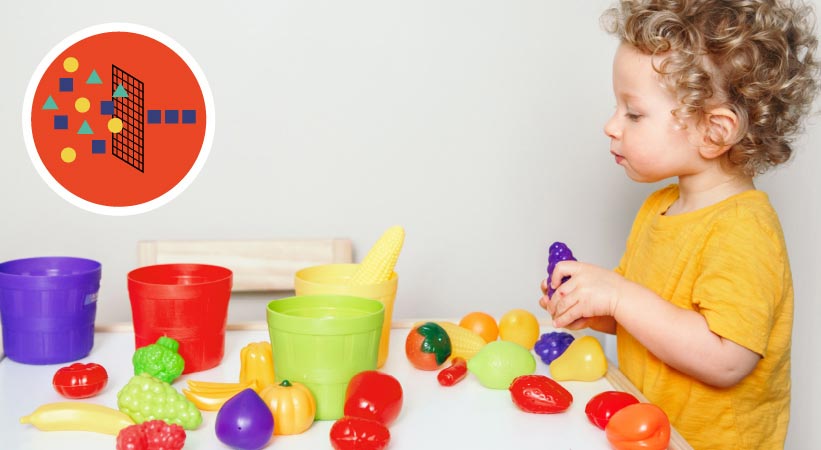
Children will be introduced to food groups (fruits and vegetables) learning about the similarities and differences between the food groups. After reading Eating the Alphabet: Fruits & Vegetables from A to Z or another book about food groups, invite children to sort food items available in class and label the groups they create. Discuss how sorting involves abstraction, which focuses on some details and ignoring others. As they sort, invite children to practice counting and comparing quantities.
Explain and define abstraction.
To introduce food groups, ask children what food groups (fruits and vegetables) they may be familiar with and what sets fruits and vegetables apart, scaffolding as needed.
Read Eating the Alphabet: Fruits & Vegetables from A to Z by Lois Ehlert or another book about food groups. During or after you read, ask children to describe what they notice about the food groups, pointing out similarities and differences as needed.
Engage children in a food sorting challenge to help set up their pretend grocery store. Show the set of unorganized fruits and vegetables to sort and baskets to place the group of sorted objects. Invite children to share the ways they can sort the objects (e.g., by type of food by color, by size), scaffolding as needed.
Guide children into sorting food items into fruits and vegetables and prompt about the similarities and differences between them, scaffolding as needed.
Have children take turns sorting the food items into the appropriate basket until all the food is sorted. After sorting is complete, review the groups and invite children to count the objects in each group and compare quantities of the groups:
To introduce labeling (which relies on abstraction), ask children how they will remember/know the sorted food items in each group. Share how labels can help because they show only the important details making it easier to identify the food items in each group.
Create two labels writing Fruits or Vegetables for each pair of children. Pass out the labels to each pair and have them draw the foods associated with that group (i.e., one pair draws fruits, while the other pair draws vegetables).
Once children finish drawing their labels, review them together.